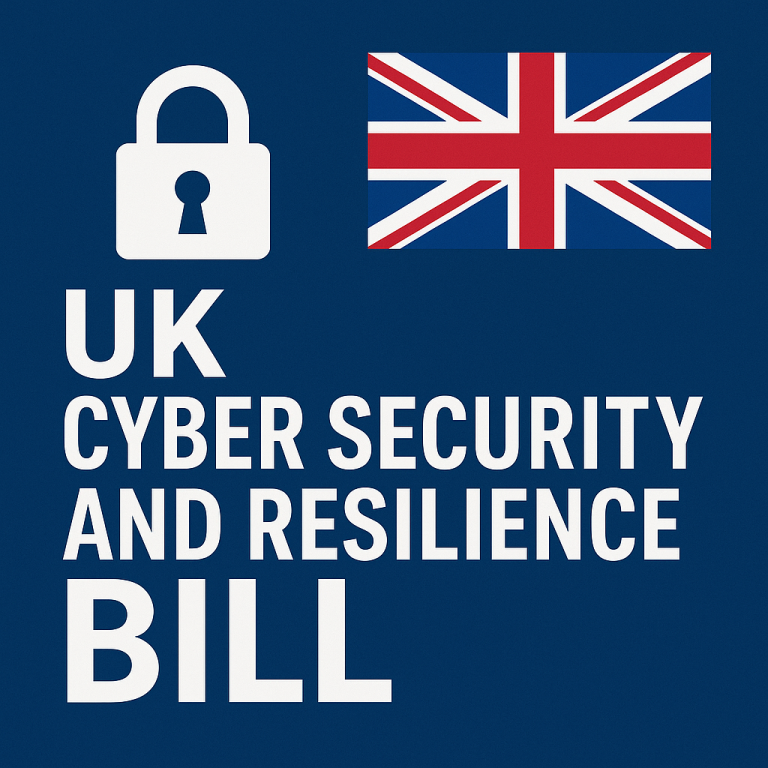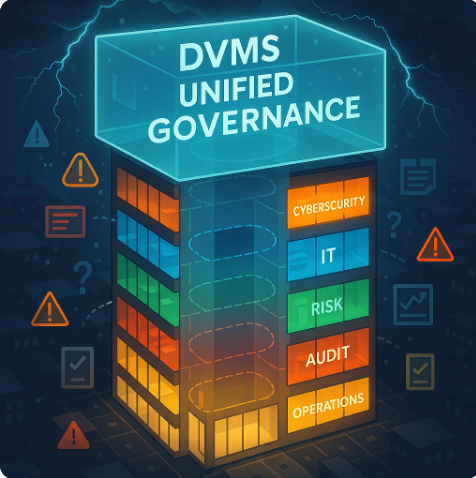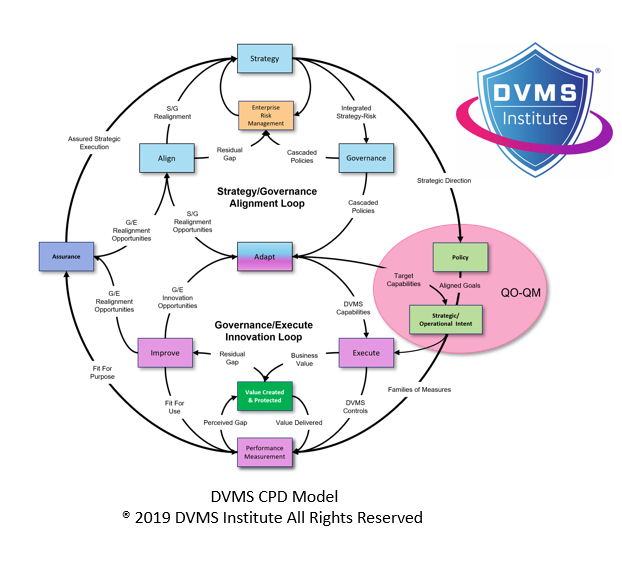UK Cyber Security & Resilience Bill and the DVMS Institute NIST Cybersecurity Framework Digital Value Management System®
Rick Lemieux – Co-Founder and Chief Product Officer of the DVMS Institute
The NIST Cybersecurity Framework (CSF) and the Digital Value Management System™ (DVMS) jointly provide a robust and scalable approach that enables organizations—regardless of their size, industry, or complexity—to comply with increasingly stringent cyber resilience regulations, including the UK’s Cyber Security and Resilience Bill. This emerging legislation reflects a global shift toward enforcing cybersecurity as a technical function and a core component of operational resilience and corporate governance. The NIST CSF and DVMS present a pragmatic, systems-based strategy for aligning cybersecurity practices with organizational strategy, ensuring compliance, and, most importantly, embedding resilience into an organizational DNA.
At the heart of this alignment is redefining how cybersecurity is perceived and implemented. Rather than being viewed as a set of IT controls or a specialized department’s responsibility, the DVMS reframes cybersecurity as a core element of digital business risk management. Every organization—whether a micro business, mid-sized enterprise, or global multinational—must treat value creation and protection as two inseparable facets of its operations. This dual perspective aligns directly with the UK bill’s emphasis on integrating cyber risk into broader business strategies and governance structures.
The DVMS leverages the updated NIST CSF 2.0, which expands its scope with six Functions: Govern, Identify, Protect, Detect, Respond, and Recover. These are not standalone phases but interconnected, continuous activities forming a proactive and reactive cyber defense loop. The Govern function is particularly critical in the UK, where board-level accountability for cyber resilience is emphasized. The DVMS incorporates this requirement by aligning strategy and governance through “strategy-risk”—a unified concept that merges strategic objectives with their associated risks. This alignment ensures that cybersecurity decisions and investments are tied to business goals, not treated as isolated compliance tasks.
The CPD Model™ (Create, Protect, Deliver) embedded within the DVMS operationalizes this strategic intent. It provides a dynamic, feedback-driven structure that continually measures and adjusts how digital value is created, protected, and delivered. This is crucial in complying with the UK bill, which stresses ongoing assurance of cyber resilience, not just annual assessments or point-in-time certifications. By framing cybersecurity within the CPD Model, the organization is not simply reacting to threats. Still, it is continuously improving its resilience posture based on real-time feedback and evolving risk landscapes.
A cornerstone of the DVMS is systems thinking, which encourages organizations to see themselves not as siloed departments but as interconnected systems of people, processes, and technologies. This perspective is essential in implementing the UK Cyber Security and Resilience Bill’s requirement for organizations to understand how their systems, people, and third-party dependencies contribute to cyber risk. The Z-X Model, a core element of the DVMS, articulates the seven minimum viable capabilities an organization needs: Govern, Assure, Plan, Design, Change, Execute, and Innovate. These are designed to be adapted to any existing framework or method, providing flexibility while ensuring coverage of all aspects of digital business capability.
For example, small businesses may already execute some of these capabilities informally, while larger organizations may have distinct departments dedicated to each. The DVMS does not mandate organizational restructuring but overlays existing capabilities to identify necessary improvements. This approach supports a “start where you are” mindset, allowing organizations to progressively mature their cyber resilience without disrupting ongoing operations—a principle that aligns with the UK government’s aim of creating proportionate requirements for organizations of varying sizes and sectors.
The DVMS also supports a proactive risk identification and questioning culture, a theme heavily emphasized in UK cyber policy. Through tools like the Goal-Question-Metric (GQM) and Question–Outcome–Question–Metric (QO-QM) models, the DVMS teaches practitioners to ask better questions about their systems, assets, and organizational behaviors. These structured inquiries uncover assumptions and latent vulnerabilities, which is critical for compliance with mandates that require organizations to demonstrate an understanding of their own risk posture and systemic weaknesses.
In the UK’s policy context, cyber resilience must also be demonstrable—boards and regulators want evidence that cybersecurity is being practiced, not just promised. The DVMS answers this challenge through Digital Value Capability Maturity Models (DVCMMs) that provide tangible metrics and maturity assessments tied to technical controls and organizational behaviors. These metrics are informed by the NIST CSF Functions, ensuring that protective controls are not only present but effective and aligned with strategic objectives.
Furthermore, the UK Cyber Security and Resilience Bill includes strong provisions for incident response readiness and supply chain security, where the DVMS shines. The framework emphasizes that organizations must assume breaches will occur and be prepared to respond. The DVMS includes practical guidance on developing misuse cases, “being the menace” internally to simulate attacker behavior, and building cross-functional incident response capabilities that incorporate legal, HR, and executive stakeholders—not just IT. This holistic view is vital for regulatory compliance and limiting breaches’ operational and reputational impact.
Another aspect UK regulators emphasize is the importance of culture and human behavior in cybersecurity. The DVMS incorporates this into its design by emphasizing cultural awareness, behavioral accountability, and the importance of leadership engagement. It views security culture not as an afterthought but as a core capability, with metrics and feedback loops to track its development and impact. In doing so, it fulfills the UK bill’s call for organizations to demonstrate cybersecurity awareness and training across all levels of staff.
Ultimately, the combination of the NIST CSF and DVMS is especially powerful for complying with the UK Cyber Security and Resilience Bill because it is scalable, adaptive, and evidence-driven. It does not matter whether an organization is in finance, healthcare, critical infrastructure, or retail, whether it is a startup or a legacy institution. The DVMS overlays onto the existing environment, aligns cybersecurity with strategic risk, and embeds resilience practices into everyday operations. This is precisely the systemic, forward-looking, and risk-informed governance model the UK legislation calls for.
The NIST CSF and DVMS offer a practical and comprehensive response to the UK Cyber Security and Resilience Bill. By operationalizing strategy-risk, adopting systems thinking, and embedding cyber resilience into the entire lifecycle of digital value creation and delivery, they provide a pathway to compliance and enduring digital trust, performance assurance, and organizational survival in an increasingly volatile cyber landscape.
About the Author

Rick Lemieux
Co-Founder and Chief Product Officer of the DVMS Institute
Rick has 40+ years of passion and experience creating solutions to give organizations a competitive edge in their service markets. In 2015, Rick was identified as one of the top five IT Entrepreneurs in the State of Rhode Island by the TECH 10 awards for developing innovative training and mentoring solutions for boards, senior executives, and operational stakeholders.
DVMS Institute is a renowned provider of accredited (APMG International), Assured (NCSC-GCHQ-UK), and Recognized (DHS-CISA-NICCS-USA) NIST Cybersecurity Framework, Digital Value Management System® body of knowledge publications, certification trainings, assessment platforms and real-life desktop simulation trainings.
The Institute’s NIST Cybersecurity Framework Digital Value Management System® certified training programs teach businesses of any size, scale, or complexity the skills to build a Performance Driven Overlay System for Cyber Resilience capable of anticipating and mitigating the systemic risk digital businesses face today.
By embedding systemic risk management into strategic decision-making and aligning it with employee cultural values, organizations can build resilience—a dynamic capability to withstand digital business disruption and comply with any cybersecurity regulation (SEC, UK, DORA, NIS2, SAMA, SOCI, IMO, etc.) or maturity model mandates (HITRUST, CMMC, C2M2 etc.).
® DVMS Institute 2024 All Rights Reserved




